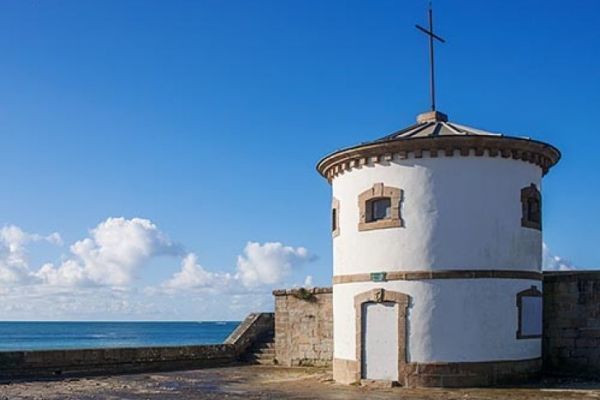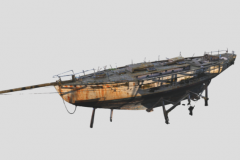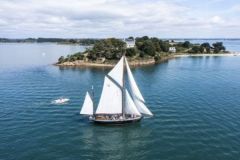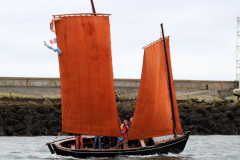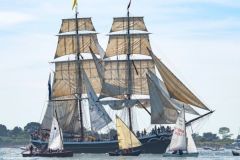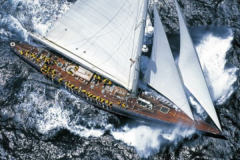In 1832, Lieutenant Julien Hippolyte Fénoux invented a mast that would later bear his name. The precursor of the semaphore, this ingenious device was designed to facilitate navigation for sailors at the entrance to the most formidable ports. The Etel semaphore operated until quite late in life, while all that remains of the Pouldu semaphore, at the entrance to the Laïta river, is the building. Long forgotten, the one at Audierne has just been restored.
From the outset: an observation
Breton corvette captain Julien Hippolyte Fénoux, passing through Audierne in 1831, noticed how difficult the entrance to the Goyen was, with its shifting sandbanks, even when the helm was not formed. Wishing to guide a ship in difficulty, he tried to make large signs with a sheet attached to a broomstick.
This experience led him, in the following years, to design a system, inspired by the hand telegraph, to inform ships of the accessibility of ports and the route to follow.
In 1839, the Annales maritimes et coloniales published an article in which the Conseil général du Finistère suggested "that a pilot mast be established at the entrance to Audierne to prevent shipwrecks" and the Conseil Général du Morbihan proposes" that the use of this means of directing vessels in danger be extended to all suitable points on the French coastline ". A following a demonstration shortly afterwards, the Lorient Chamber of Commerce decided to build such a mast in Port-Louis.
Operating principle
An article in the Annales maritimes of December 1839, subtitled "Instruction aux navigateurs", defines the major objective of the invention: " wing in the shape of an isosceles triangle, movable on its axis, is directed to the side on which you want to steer the ship. The positions of the mast arm guide the ship remotely and in real time through the obstacles, indicating which channels to use, port or starboard. The people in charge of the masts are therefore pilots, and need to be trained as such.
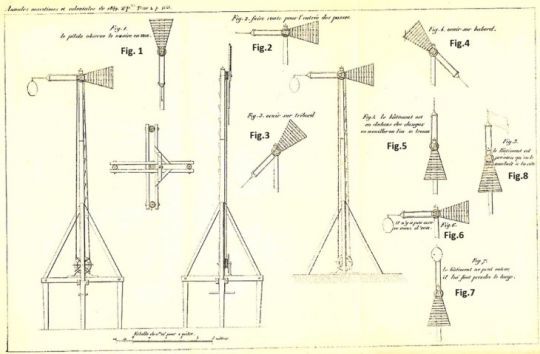
Audierne from construction to restoration
Audierne's Fénoux mast was installed in 1841 and commissioned in 1843. It was located in its original position on the heights of La Garenne in Coz Fornic, 200 m south-west of the Capucins' garden, as the breakwater and towpath did not yet exist.
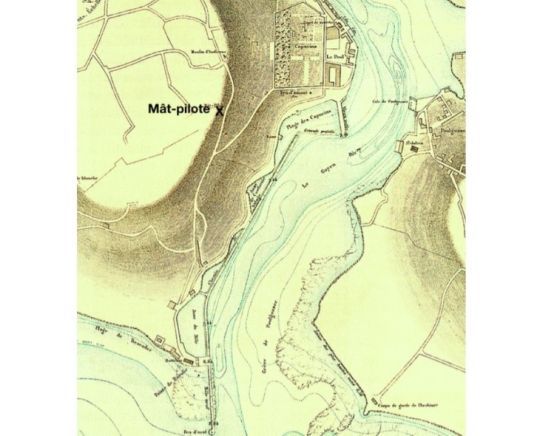
Despite the construction of the breakwater from 1848 to 1855, stabilization of the channel and sandbanks did not prove as effective as hoped, and the bar persisted. In these circumstances, the pilot mast was retained.
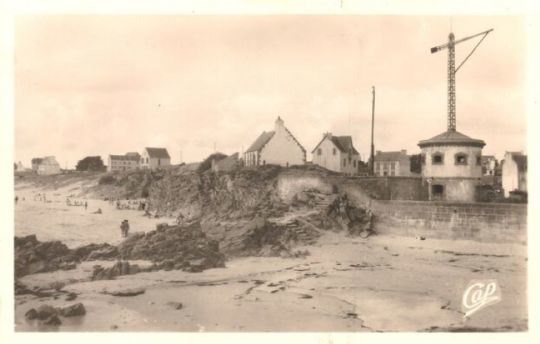
The construction of buildings around the pilot mast, partially obscuring its visibility from the sea, necessitated its transfer in 1882 to its present location on the Raoulic platform. Since this new location, it has made a more effective contribution to navigational assistance. It also warns of any obstacles posed by ships leaving the port along the towing quay built in 1856.
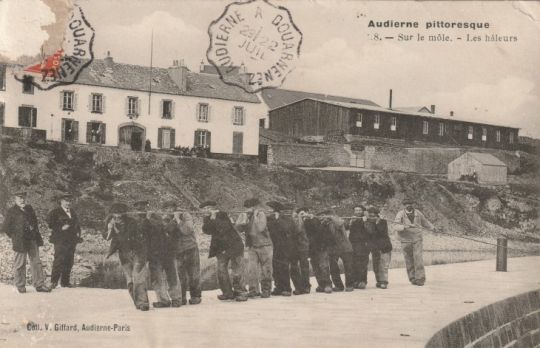
Today, Audierne is home to the last turret built to Fénoux's specifications. In 2022, the pilot mast was listed as a historic monument.
The structure comprises a circular building with a conical zinc roof. The two-storey building is in granite, covered with a rendering that reveals a median stringcourse, a roof cornice and an ashlar base. Restoration of the 2nd floor was completed in January 2024.
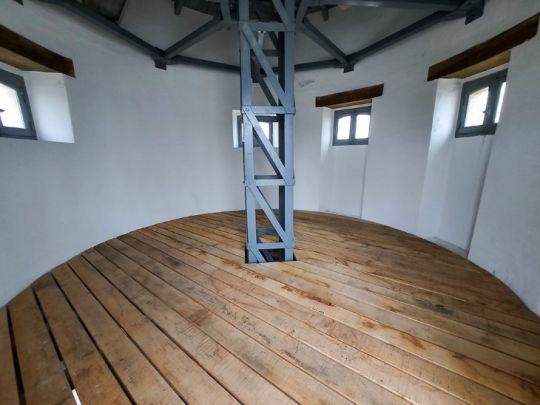
For optimum surveillance, several windows have been installed: five on the first floor, four of which face out to sea and a fifth facing the harbor to the north, and two on the first floor (one facing north, the other south).

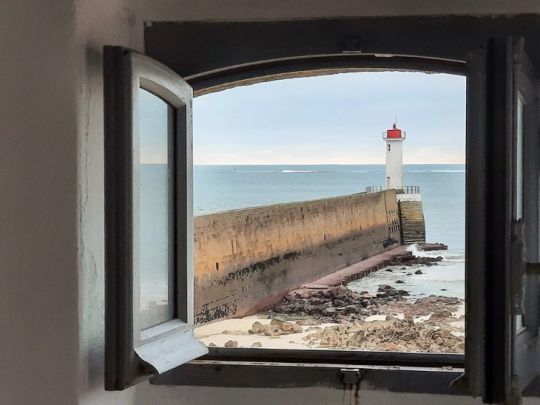
In 2023, the new mast was installed by Corlay of Douarnenez.
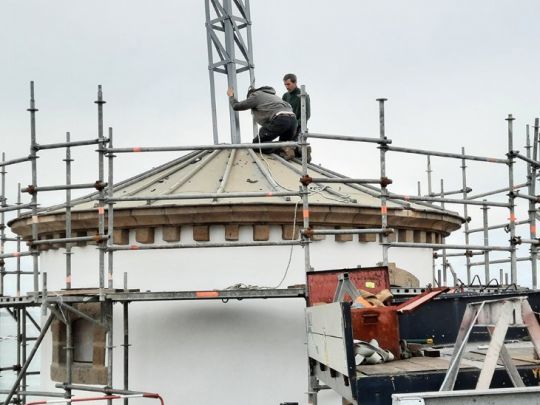
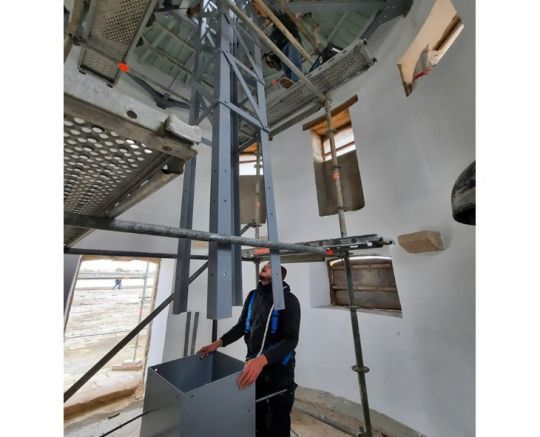
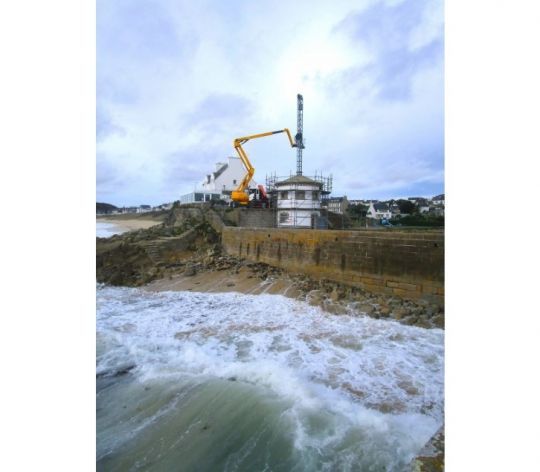
In the Annales maritimes of 1844, Fenoux details the conditions under which the Audierne station was set up. He writes: '' On October 27, with a strong S.S.W. wind and terrible seas, two small tidal chasers, loaded for La Rochelle, which had been unable to overtake the Penmark, were trying to stop at Audierne. The helm was breaking too furiously for the pilots to get aboard these ships, which didn't know the way in. Finding myself alone at the helm, I manoeuvred it myself and had the good fortune to bring them into the harbour one after the other, without accident: without this help, they would have been infallibly lost body and soul... ''
A mobile application, in the form of an interactive game for controlling the mast, is in the final stages of development in collaboration with Opixido. Content will be translated into Breton and English.

The benefits of deployment on the Atlantic coast
In 1843, the first three stations equipped with a pilot mast were completed, and Julien Fénoux personally undertook the training of two pilots at Port-Louis, two at Saint-Nazaire, and then four at Audierne.
The introduction to ''Revue des ports de France, depuis Fontarabie jusqu'à Dunkerque'', published in 1845 in Annales maritimes, is unequivocal about the need for pilot masts at the entrance to estuaries with difficult access: ''.. We must hurry to equip all the points on our coasts that need them. This will be a very small expense for the Government, compared to the cost of lighthouses, and if night navigation needs protection, day navigation also needs help ''.
Corvette Captain M. Odet, for example, testifies to the difficulties of entering Bayonne. In his opinion, the system proposed by Fénoux offers several advantages: '' The entrance to the port is blocked by a dangerous bar. A toggle mast is placed on a tower to indicate to ships the route they must take to enter the Adour. Signals are made by means of a flag which is pointed to the right or left, depending on the direction the piloted vessel is to follow... when a ship wants to enter Bayonne with offshore winds, it can only see the indicator flag through the sheath, and can therefore only distinguish it with difficulty; whereas the signals from the mât-Fenoux are made by means of a wing or telegraph arm, which is seen in space, and presents its entire surface to ships; the mast which carries it, turning on a pivot, follows the movements of the ship it is piloting ''.
In the end, only six Fenoux masts will see the light of day: in Bayonne, Saint-Nazaire, Clohars-Carnoët, Port-Louis, Etel and Audierne.


 /
/ 